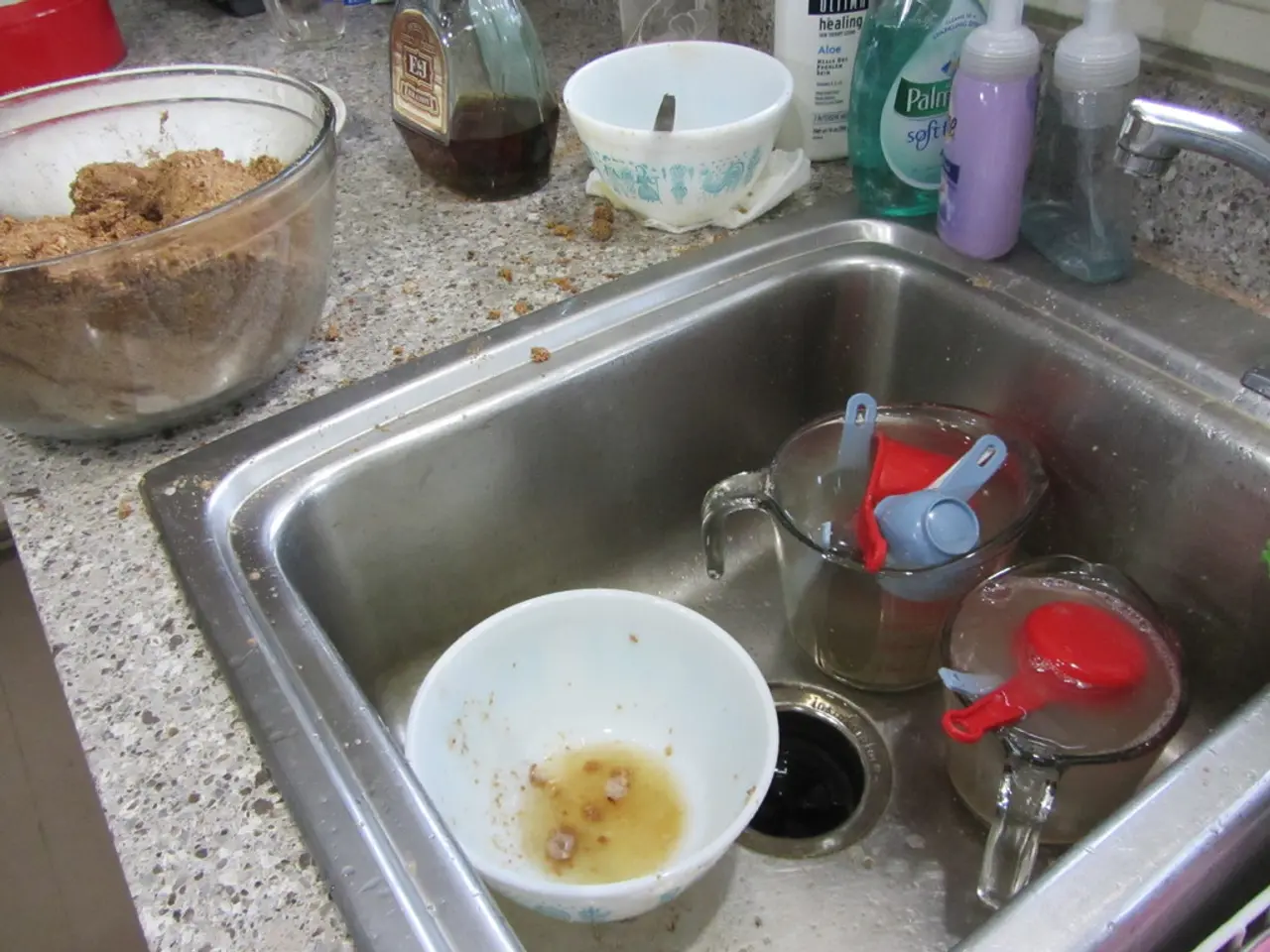Secondary calcium reactor chambers reduce excess carbon dioxide and raise effluent pH, as explained by BRStv Investigates.
In the world of aquarium maintenance, the addition of a secondary chamber to a calcium reactor has been found to significantly impact the pH and alkalinity levels of the effluent solution. This innovative setup allows for a controlled progression of chemical reactions that affect carbonate chemistry, ultimately resulting in a more stable final effluent pH and alkalinity.
A primary chamber in a calcium reactor typically facilitates the dissolution of calcium carbonate (CaCO3) by injecting CO2 gas, which lowers the pH and releases calcium ions and bicarbonate into solution. The secondary chamber, however, provides additional time for reactions such as CO2 degassing (raising pH), calcium precipitation, or alkalinity adjustment to occur.
In this secondary chamber, CO2 can partially escape, increasing the pH of the effluent compared to the primary chamber effluent, and alkalinity can be stabilized or increased due to the equilibrium shift favoring bicarbonate and carbonate ions. This staged approach reduces excessive acidity in the effluent and results in a more stable final effluent pH closer to neutral or slightly alkaline.
An experiment conducted using Two Little Fishies Reborn Calcium Reactor Media revealed a significant increase in alkalinity after the secondary chamber, particularly when running at lower pH setpoints and slower flow rates. At a pH of 6.4 and flow rate of 20 mL/min, there was a slight pH increase of 0.07 to 6.47pH after the secondary chamber. The average change in concentration across all flow rates at the 6.8 pH setpoint was approximately 6%, indicating a less pronounced increase in alkalinity at a higher pH set point.
At the 6.8 pH set point, there was a slight increase in pH from 6.8 in the main recirculating chamber to 6.85 after the secondary chamber at a flow rate of 20 mL/min. Starting with a pH of 6.4, the average alkalinity increased by about 8.2 dKH after traveling through the secondary chamber at a flow rate of 20 mL/min. At the 6.8 pH set point, there was a full change of 1.6dKH in alkalinity after the secondary chamber at a flow rate of 20 mL/min.
It is important to note that while the addition of a secondary chamber can result in a very small increase in pH, no more than a few hundredths of a pH point, it does not have a significant difference in max saturation between the main chamber and the secondary chamber.
The Vertex RX-C 6D Calcium Reactor integrates a secondary pH chamber into its design, making it an attractive option for aquarists seeking to maintain stable pH and alkalinity levels in their tanks. Future tests will explore the saturation levels of other popular calcium reactor media types such as CaribSea ARM Coarse and Brightwell Aquatics CoralAzarus.
For those considering the addition of a secondary chamber to their calcium reactor, it is essential to understand that while this modification can have a positive impact on the tanks pH levels and alkalinity, other factors such as supplementing your ATO with Kalkwasser, adding a refugium, or attaching a CO2 scrubber to your protein skimmer will all have a more drastic impact on the tanks overall pH compared to adding a secondary chamber to a calcium reactor.
Sources: [1] [2] [3] [4]
Related videos: - Does the calcium reactor flow rate REALLY matter? | BRStv Investigates - How does Calcium Reactor potency change at different pH points? ANSWER!
Incorporating a secondary chamber to a calcium reactor as seen in the Vertex RX-C 6D Calcium Reactor can foster a more stable pH and alkalinity in aquarium tanks, making it an ideal choice for health-and-wellness-conscious aquarists pursuing science-based technology in their health-and-wellness routines. Furthermore, while the addition of a secondary chamber in a calcium reactor has minor effects on pH levels compared to other measures like supplementing ATO with Kalkwasser, adding a refugium, or attaching a CO2 scrubber to protein skimmers, it plays a crucial role in maintaining balanced chemistry within the aquarium environment.




